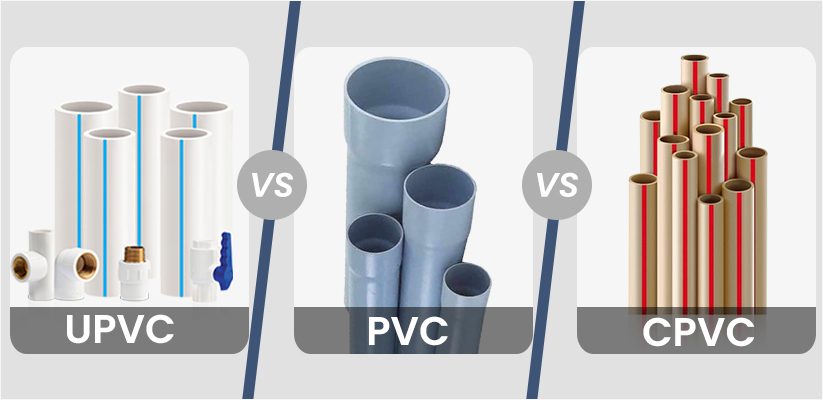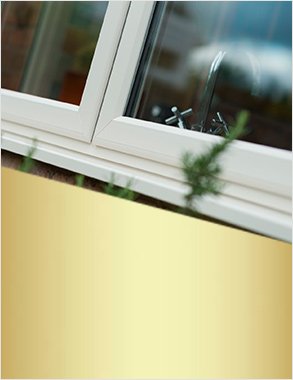What is UPVC?
In the world of construction, UPVC has emerged as a versatile alternative to wood. Short for unplasticized polyvinyl chloride, UPVC finds its application in double-glazed window frames and window sills. Offering a wide range of colors and the ability to resemble various materials, including wood and metal, UPVC brings practicality and versatility to building projects. Join us as we explore the benefits and applications of this remarkable material in the construction industry.
Post your Requirement
Properties of uPVC
The following are some of the properties:
- It has a density of 1.43g/cm3, which is about a sixth of that of cast iron and steel, making it much easier to transport and handle during installation.
- The majority of acids, alkalis, organic compounds, oils, and fats do not affect it.
- The resistivity of this material is larger than 1014 Ohm/cm, thus it has good insulating characteristics.
Uses Of UPVC
These are utilized in water supply systems to meet plumbing requirements. Additionally, they are utilized for tube work casting and the production of elevating mains for hand pumps. It is used in the chemical industry to transport chloride and other chemicals. It is utilized as a ventilation pipe in washrooms to remove corrosive gasses. This is used to make electrical conduits in the electric sector. It’s often used in agricultural irrigation systems.
Difference between UPVC and CPVC
The fundamental difference between UPVC and CPVC is that the former is produced without the use of plasticizers, whereas the latter is produced with the use of plasticizers and is also chlorinated. The following are some of the most glaring differences:
- Manufacturing Process: Polyvinyl Chloride without plasticizers is referred to as UPVC (they are not used in the manufacturing process). Chlorinated Polyvinyl Chloride is a thermoplastic substance made from polyvinyl chloride that has been chlorinated.
- Mechanical characteristics: UPVC is a material that is robust, durable, transparent, and long-lasting. It has a lot of strength and speed. Chlorinated Polyvinyl Chloride is a more adaptable material. It has mechanical qualities that are extremely comparable to UPVC at room temperature. This is also a material with excellent mechanical properties. These properties are retained in the case it is processed at greater temperatures
- Chemical characteristics: Chemically aggressive and corrosive fluids have little effect on UPVC. It has great weathering resistance and demonstrates strong resistance to acids, bases, and salts. Aromatic and chlorinated solvents, esters, and ketones are not resistant to it. It’s non-conductive and flammable to a lesser extent. Chlorinated Polyvinyl Chloride is more resistant to heat. The temperature resistance of UPVC is roughly 65 degrees Celsius, while Chlorinated Polyvinyl Chloride is around 95 degrees Celsius.
- Installation: Transporting and installing the materials is simple and light. The flexibility of Chlorinated Polyvinyl Chloride makes the procedure even easier.
- Application: The low-maintenance qualities of UPVC make it a popular choice in the construction business. In the chemical processing sector, shipbuilding, and other industries, it’s also employed as a non-drinkable supply and drainage system. Water plumbing can also be accomplished using Chlorinated Polyvinyl Chloride.
What is PVC?
PVC (polyvinyl chloride) is thermoplastic composed of 57% chlorine (obtained from industrial grade salt) and 43% carbon (obtained mainly from oil/gas via ethylene). It is one of the most widely used plastics in the world. It is commonly used as a replacement for copper and aluminum pipes but not used for window frames.
- It is an incredibly versatile and flexible material.
- It is less durable compared to UPVC.
- It is resistant to oxidation, oil, and several chemicals. It also withstands sunlight and flame.
- PVC is used for unheated water. It is more suitable for cold water systems.
- PVC can be used in many applications, including pipes, recreational use/building, drainage systems, cable insulations, toys, etc.
- It is not very expensive and affordable.
- It is a biodegradable material that has less impact on the environment.
- Only 1 percent of PVC is recyclable, unlike UPVC.
Difference between PVC and UPVC
PVC and Unplasticized PVC materials are both constructed of Polyvinyl Chloride, but they have distinct qualities and are thus suited for various uses. Some of the differences are below:
- Manufacturing Stage: Because of the stiff structure of the polymer, Polyvinyl Chloride is often highly robust and sturdy. Plasticizing polymers are added to Polyvinyl Chloride during the manufacturing process to make them more flexible. Contrary to common assumptions, plasticizing polymers are not used in the production of UPVC. As a result, UPVC is hard and less flexible than Polyvinyl Chloride.
- Application: Plumbing is the major use for both PVC and UPVC. In plumbing, irrigation, and pool circulation systems, Polyvinyl Chloride is frequently used as an alternative to aluminum or copper. Because it is not hard, it may be readily cut to appropriate lengths and glued together. Aside from plumbing, UPVC is employed in heavy-duty water transport and the building sector. It has high tensile strength and is chemical and corrosion-resistant.
- Durability:
- Both materials are meant to be long-lasting. UPVC, on the other hand, is more durable than Polyvinyl Chloride.
- Disposal: Both are made from non-biodegradable substances. UPVC, on the other hand, is recyclable and may be remodeled into new things at very high temperatures.
- Safety and Risks: Because UPVC does not contain plasticizers like BPA or phthalates, they are usually considered safe. Polyvinyl Chloride-coated wires, on the other hand, are a health concern when exposed to fire because HCl vapors are produced. When the plasticizers used in Polyvinyl Chloride leak out, they have an impact on the environment.
Properties of PVC
Below are some of the most amazing properties:
- It has a high density relative to other polymers (specific gravity around 1.4).
- It is inexpensive and easily accessible.
- This rigid material has a high hardness and durability rating.
- It has high tensile strength. Chemicals and alkalis have little effect on polyvinyl chloride.
Uses Of PVC
It is a low-cost, dependable material that may be placed without the help of pricey welders. More than half of all resin is produced for use in buildings. This may be made softer and more flexible by adding plasticizers before using them as cable insulation. It is also fire-resistant and affordable. Its sheets are often used for signage because they are inexpensive, sturdy, and easy to paint.
What is CPVC?
CPVC stands for chlorinated polyvinyl chloride. It is also known as PVC’s cousin as they possess many similar properties. It is produced through a chlorination process of PVC resin.
- It is lightweight and resistant to corrosion and tuberculation.
- It is suitable for hot water applications. It can handle a temperature of 200F.
- It is used for industrial liquid handling.
- CPVC pipes have a soft surface inside which makes it easier to carry water to distant places.
- It performs and sustains well in a tough situation.
- It is energy efficient.
- Easy to handle and install.
Difference between CPVC and PVC
Polyvinyl Chloride and Chlorinated Polyvinyl Chloride are often utilized for ordinary plumbing needs in many different locations and geographies. Let’s take a closer look at the rundown of the distinctions.
- Life: The longevity of PVC is solely determined by the quality of the raw materials used and the proportion of fillers employed. A CPVC, on the other hand, has a life expectancy of about 50 years, depending on the quality, with a 105-fold safety factor.
- Material Type: PVC is made from resin plus additives (lead is added as a processing aid). The Chlorinated Polyvinyl Chloride is built with lead-free finishing compounds and is, therefore, potable water-approved.
- Chances of Breakage: Due to their rigidity and large filler content, Polyvinyl Chloride becomes brittle with time. Although the material is stiff, the filler content in CPVC is small, resulting in low breakability.
- Effect On Water: Lead is used as a processing aid in Polyvinyl Chloride, which is toxic to humans. These are also non-NSF certified. Tin is used as a stabilizer in Chlorinated Polyvinyl Chloride, making them potable water certified.
- Temperature: Polyvinyl Chloride can only be utilized in cold water applications since they are only suited for temperatures below 50°C. Because Chlorinated Polyvinyl Chloride can resist temperatures of up to 92 degrees Celsius, they are suitable for both hot and cold water.
- Effect of Pressure: The possibilities of Polyvinyl Chloride degrading are quite considerable as each point of temperature rises. The possibility of deterioration is lower in Chlorinated Polyvinyl Chloride, and the strength to manage pressure is higher.
- Quality: To remain competitive in the market, producers overburden Polyvinyl Chloride with filler materials with little regard for their quality. In the case of Chlorinated Polyvinyl Chloride, the compounds are pre-combined and cannot be blended with fillers. Furthermore, the substances employed in these are NSF-certified.
Properties of CPVC
The features of chlorinated polyvinyl chloride are listed below :
- The temperature at which glass transitions is very high.
- When exposed to high ambient temperatures, they offer resistance to distortion or deformation.
- Chlorine and chlorine dioxide do not affect Chlorinated Polyvinyl Chloride-based products.
- Mechanical, dielectric, flame, and smoke characteristics are all exceptional.
- Manufacturing and installing it is reasonably affordable. Both downcycling and recycling are possible.
Uses Of CPVC
It is a trouble-free, long-lasting solution for the hardest industrial settings, and it’s used in a variety of industries. This delivers a safe, efficient, and flexible system that is resistant to scaling, pitting, and bacteria accumulation regardless of the water pH or chlorine levels for plumbing applications that demand better temperature and pressure dependability. It is appropriate for a variety of housing applications because of its flame and smoke resistance, as well as its simple connecting procedure.
Conclusion
In conclusion, the world of construction offers multiple choices when it comes to PVC-related materials. UPVC stands out as a practical and versatile alternative to wood, while PVC remains widely used for various applications. CPVC, on the other hand, provides enhanced temperature and pressure resistance. Understanding the differences and properties of these materials empowers builders and homeowners to make informed decisions for their specific needs. Choose wisely and unlock the potential of these remarkable PVC variations in your construction projects.





















Post A Comment